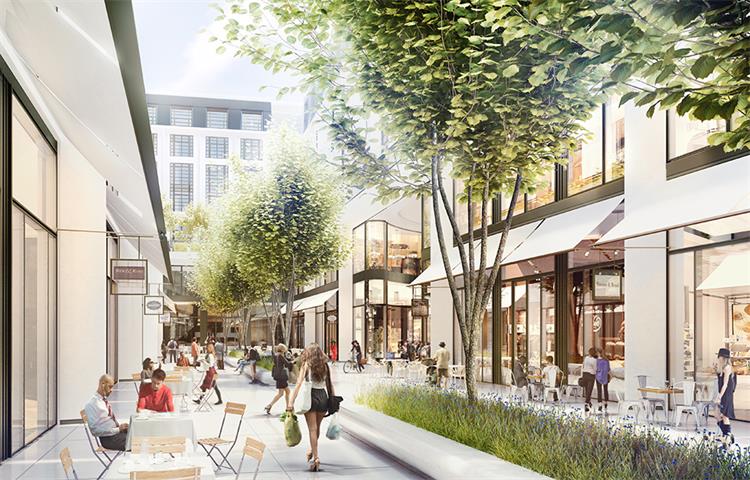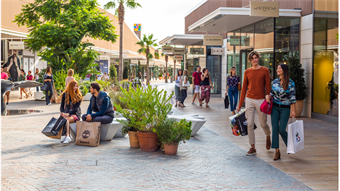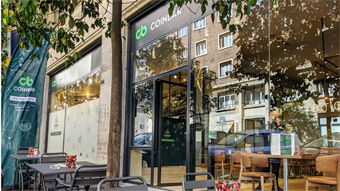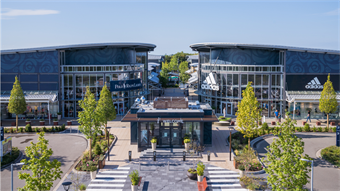Creating a modern-day Forum
- In Strategy
- 22:10, 24 april 2018
- 2158 Views

Markus Meijer, CEO of Meyer Bergman, explains how mixed-use assets meet the ‘live, work, play’ demands of urban occupiers, providing sustainable income for real estate investors.
Securing and driving occupier demand is as critical for the success of a real estate investment as location selection. From its inception, Meyer Bergman’s investment philosophy has been occupier-driven: where do retailers want to be and what space requirements are driving their leasing decisions?
Our understanding of tenants’ needs in a competitive retail environment – visibility, location association, access to footfall, catchment strength, merchandising parameters – guide our market and asset selection. This has served our investors well over the past decade, but what is also very interesting is how the execution of this strategy has evolved.
Our first fund focused on the shopping centre, the staple of any retail portfolio as recently as five years ago, whereas today we target properties with a retail component in urban locations, where there is a confluence of capital, talent, and tourism.
These urban hubs offer diversity, connectivity, and authenticity – the modern equivalents of the Roman forum, the central market place where the important civic and commercial events of the day occurred. In today’s hyper-connected digital age, citizens continue to find relevance in these city centre locations because they offer spontaneity, an experience and an opportunity to discover things that cannot be easily replicated in the virtual world. As much as technology may liberate us from locational constraints, enabling us to live and work remotely for example, as social animals human beings are compelled to congregate.
Rising urbanisation
Co-working and co-living models are very topical examples of this basic human urge. Given that urbanisation will mean that two-thirds of the global population will be living in cities by 2050 compared with 54% today, as projected by the United Nations, we expect that the modern-day forum will continue to grow and to gain in appeal for many years to come.
This shift has changed our universe of investable assets, leading us to high street retail investments in cities including London, Paris, Berlin, Copenhagen, Oslo, Dublin and Milan. By the nature and fortitude of European building practice, urban high streets are dominated by mixed-use real estate. Complementary uses such as residences above shops or theatres atop restaurants are what make urban environments so dynamic.
Investing in high street properties requires the curation of a symbiotic balance for mixed-use assets just as specialist managers carefully orchestrate the retail mix, circulation, lease expiry profiles and so on at shopping centres. The successful investor will create a unique product that will appeal to tenants and users alike.
Lifestyle-focused approach
Blending the ‘live, work, play’ elements in a building is in huge demand by urban occupiers. This lifestyle-focused approach originally arose as retailers adapted to the omni-channel trading environment. Today this focus resonates strongly with most urban occupiers. As real estate investors grounded in a thorough understanding of retail, our approach is about finding the right assets in the locations where a much broader and diverse group of occupiers want to be.
Innovation is changing the way that occupiers use buildings too. This presents opportunities to develop from scratch or to change the mix of uses in an existing building, particularly single use assets. Our investment in Whiteleys shopping centre in the Bayswater neighbourhood of London illustrates our approach to mixed-use investing. It combines a mix of uses in an attractive urban location that will boost the long-term value of this building – not just for our investors, but for its occupiers, users and the broader community.
‘In today’s digital age, citizens continue to find relevance in these city centre locations.’
Markus Meijer, Meyer Bergman
Whiteleys was built as one of the first department stores in London. It anchored the retail high street serving the neighbourhood. Transformed into a shopping centre in the 1980s, the building lost its appeal to shoppers because it was inward oriented, hard to navigate and overshadowed by the nearby prime shopping destinations on Oxford Street and Westfield Shepherd’s Bush.
There was too much retail and the mall configuration made the building obsolete. Its redevelopment will result in a new mixed-use asset offering retail that connects well to the high street, residences on the upper floors to enliven streetscape, and a boutique hotel to offer the leisure aspects. Complemented by a gym, cinema and an array of restaurants and cafés, Whiteleys will become a place to live, work, meet, socialise and consume.
Another of our mixed-use projects is Borough Yards, located near London Bridge. It involves redeveloping the Victorian railway arches previously occupied by the wine-tasting venue Vinopolis and neighbouring sites to create nearly 18,580 m2 of offices, retail and leisure space. The project fronts onto the pedestrian path linking the Tate Modern gallery to the west with Borough Market, London Bridge Station and The Shard skyscraper close by to its east.
Underserved retail
This part of Borough has been underserved in terms of its retail offering, given the needs of the community, the commuters who arrive at the busy London Bridge station, and the number of visitors exploring the landmark attractions of this part of London. We will be curating a vibrant mixed-use destination offering an attractive balance of work and leisure.
Urbanisation and the ‘live, work, play’ culture is contributing to the renaissance of urban neighbourhoods in major cities. To succeed, real estate investors need to embrace the complexity of the urban environment. For those who focus on central city locations like us, mixed-use properties offer the most compelling investment opportunities.
Placemaking skills
Creating long-term value in these hybrid assets, however, requires placemaking skills. Success will hinge on delivering the right mix of uses that responds to demands and fits with the location. This requires expertise on sectors as diverse as offices and studio apartments for millennials, as well as the artistry of bringing them together. The resulting value of a mixed-use building is more than the sum of its component parts.
Beyond meeting the demands of a range of occupiers and more able to adapt to changing requirements, mixed-use assets offer other risk-adjusted benefits. They offer long-term defensive qualities, which provide a stable income profile from the variety of tenant types and sectors. This often provides synergistic benefits and results in lower vacancy and greater scope for rental growth.
As such, we target major city centre locations and our retail expertise anchors our mixed-use strategy as we respond to the changing demands of a much wider group of users and occupiers, making what we hope will be a positive contribution to the continuing success of these locations.






